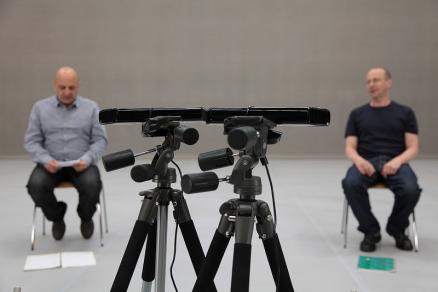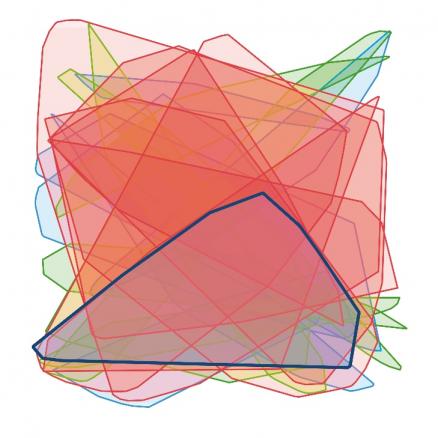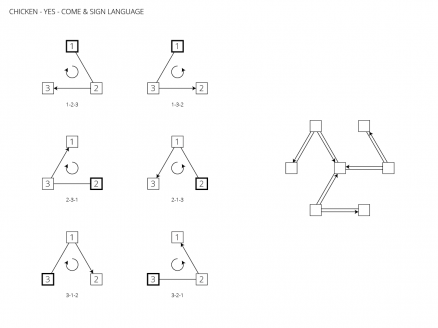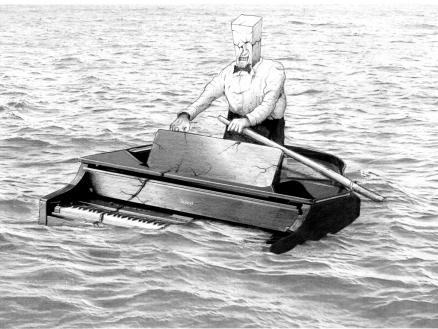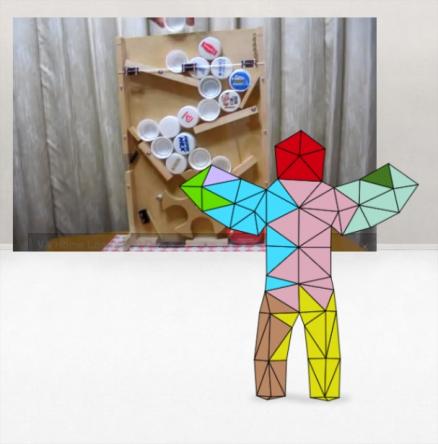Jonathan Burrows & Matteo Fargion Score Production Sessions
Jonathan Burrows & Matteo FargionScore Production SessionsFollowing the beta-release of Deborah Hay's Using the Sky on-line score at the German Dance Congress in early June 2013, Florian Jenett & Amin Weber returned to working on Jonathan and Matteo's materials. Svenja Kahn (Fraunhofer Institute) had been working on a way to automatically detect movement patterns in the Kinect recordings of Jonathan and Matteo and add markers for these (download a scientific paper by the Fraunhofer team describing some of this work). |
|
|
As mentioned in the Final Filming report, markering their fast movement manually with Piecemaker was too time-consuming (the video fragment on the right from Both Sitting Duet - armswings - was manually markered using Piecemaker). A partially computer based solution using the Kinect data looked promising. In addition to working with the Kinect data, the team reviewed interviews from the earlier research sessions, in particular the October 2011 meeting. Basic patterns Jonathan and Matteo described working with (e.g. 7, 6, 14, 14, 7 from John Cage's 'Lecture on Nothing') were probed to see if they would reveal new permutations. References or 'resonances' they mentioned were researched, e.g. the hand gestures of Qawwali singer Nusrat Fateh Ali Khan. |
|
|
In late June, Florian, Amin and Mathias Bär developed a summary of main concepts in Jonathan and Matteo's work. These included Principles they work with (on page 26 of Jonathan's Both Sitting Duet score book), Patterns, References, their differing backgrounds, and long practice. These were discussed in the Workspace (this space is currently private) and in email exchange with Jonathan and Matteo. Several similarities to Deborah Hay's way of working (e.g. principles and practice) were commented on. However, research into the patterns underlying Jonathan and Matteo's duet work was not proving as revealing as had the 'search for patterns' or regularites in Deborah Hay's material (see her process documentation pages). |
|
|
During one email exchange in early July, Florian was seeking more clarity about a pattern called A-B-B-A which Jonathan had explained in the October 2011 session in Brussels (see video to the right, which can also be found in the Patterns & Pulse score set). Jonathan wrote back "ABBA and BAAB are permutations of arm waving phrases that appear in almost all the Speaking Dance arm waving. But they're usually mixed in or lead on to other patterns (...), so even I don't know with any great clarity where they are." |
|
|
Two score production sessions were organised to take place 23-24 July and 13-14 September 2013 in London. Nik Haffner and Scott deLahunta joined these. The schedule for the first meeting at Siobhan Davies Studios focused the first day on showing results of the analysis and visualisation of various patterns in Jonathan and Matteo's work. Florian also demonstrated ideas for small interactive systems or games that would allow one to explore the rhythmicality of the patterns and then to diverge from these rhythms. (Time spent for decoding their scores and more interviews with an extensive list of questions was also scheduled.) |
|
|
The next day Jonathan brought in the presentation "Rebelling Against Limit" a lecture concert for which the basic text had been prepared for Tanzcongress in June 2013. This text explores the usefulness or not of the structures and scores they use in their work (review of lecture concert at Sadler's Wells 15 January 2013. The wide-ranging discussions that followed circled around the topic of where and under what conditions do structures collapse -- and how might that be embraced on what is offered on the Motion Bank website. |
|
|
The score team went away from this first session in July with the realisation that their 'excursions into the world of patterns' had seemed too simple so they moved quickly to the next step of looking for something to attach these patterns to. The idea was to come up with digital performers who could express the patterns, without drawing attention to the patterns themselves. The result was the creation of a series of sketches of possible pattern 'generators' -- and 'performers' who could express these patterns. |
|
|
For the 13 September meeting (shortened to one day with Jonathan and Matteo), at Artsadmin Studios in London, Jonathan and Matteo were sent a 'package' of performers and generators to view. The morning discussion focused on how to get the most out of these ideas including connecting them to music. In the afternoon, they were interviewed separately on the same 10 questions (download the list). One of the original ideas gathered at the start of the project at the first Brussels research meeting in July 2011 had been to "find the right tone, for example hand-made and human-scale". With only a few months to realise the finished online score website for Jonathan and Matteo, it could be said that a number of those earliest ideas (see Haffner's original document) were still in play. |
|
Jonathan Burrows & Matteo Fargion Process Documentation Pages:
http://motionbank.org/en/content/jonathan-burrows-matteo-fargion
http://motionbank.org/en/event/jonathan-burrows-matteo-fargion-research-sessions
http://motionbank.org/en/event/jonathan-burrows-matteo-fargion-test-filming
http://motionbank.org/en/event/jonathan-burrows-matteo-fargion-guest-performances
http://motionbank.org/en/event/jonathan-burrows-matteo-fargion-final-filming
http://motionbank.org/en/event/jonathan-burrows-matteo-fargion-score-production-sessions
INFO
As a response to the COVID-19 / Corona situation we just opened our research system (including Piecemaker and MoSys) for dance education and practice.
This year Motion Bank celebrates it's 10 anniversary. As soon as it becomes possible to make final plans we will release information about these.
Please consider subscribing to our newsletter.

